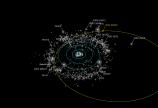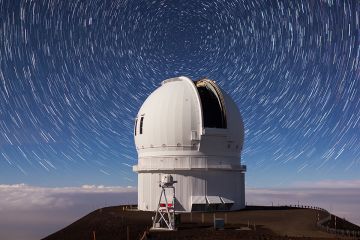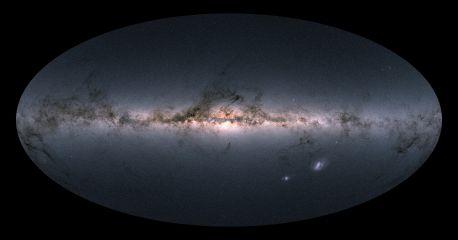UVic astronomers help discover new dwarf planet

– AS PART OF TODAY'S CFHT ANNOUNCEMENT –
An international team of astronomers including University of Victoria researchers have discovered a new dwarf planet orbiting in the disk of small icy worlds beyond Neptune.
The new object is roughly one-and-a-half times the size of Vancouver Island (700 km) and has one of the largest orbits for a dwarf planet.
Designated 2015 RR245 by the International Astronomical Union's Minor Planet Center, it was found using the Canada-France-Hawaii Telescope (CFHT) on Maunakea, Hawaii, as part of the ongoing Outer Solar System Origins Survey (OSSOS).
“The icy worlds beyond Neptune trace how the giant planets formed and then moved out from the sun. They let us piece together the history of our solar system,” says Michele Bannister, an astronomer doing postdoctoral research at UVic. “Almost all of these icy worlds are painfully small and faint, so it’s really exciting to find one that's large and bright enough to study in detail.”
RR245 was first sighted this February by JJ Kavelaars, a researcher with the National Research Council’s Herzberg Astronomy and Astrophysics in Victoria and an adjunct professor at UVic. “There it was on the screen,” says Bannister. “This dot of light, moving so slow that it had to be at least twice as far as Neptune from the sun.”
The team became even more excited when they realized that the object’s orbit takes it more than 120 times further from the sun than Earth.
“Worlds of this size are fascinating because they can potentially tell us about what makes an object go from being an unchanging lumpy mashed-together structure of ice and rock to having geological processes that separate and rearrange its material, as happens on Pluto,” says Bannister. “The size of RR245 is not yet exactly known, as its surface properties need further measurement. It’s either small and shiny, or large and dull.”
As RR245 has only been observed for one of the 700 years it takes to orbit the sun, where it came from and how its orbit will slowly evolve in the far future is still unknown. Its precise orbit will be refined over the coming years, after which RR245 will be given a name.
OSSOS involves a collaboration of 50 scientists at institutes and universities around the world and is based on observations obtained with MegaPrime/MegaCam, a joint project of the Canada-France-Hawaii Telescope and CEA/DAPNIA, and on data produced and hosted by the Canadian Astronomy Data Centre.
CFHT is operated by the National Research Council of Canada, the Institute National des Sciences de l'Universe of the Centre National de la Recherche Scientifique of France, and the University of Hawaii, with OSSOS receiving additional access due to contributions from the Institute of Astronomy and Astrophysics, Academia Sinica, National Tsing Hua University, and National Science Council, Taiwan.
--30--
Photos
Media contacts
Michele Bannister (Physics and Astronomy) at 250-580-3085 or micheleb@uvic.ca
Vimala Jeevanandam (Faculty of Science, Communications) at 250-721-8745 or scieco@uvic.ca





